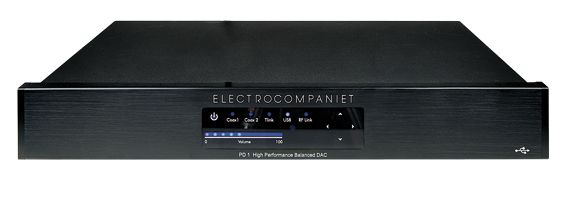Electrocompaniet Pd 1 (£1250)

Electrocompaniet’s new PD-1 is the largest DAC here and would be the most traditional in appearance but for its touch-sensitive display panel. It’s solidly enough built – although the review top plate on the review sample did rattle against the fascia.
The PD-1 is unique in this group in two respects. First, it is supplied with a remote control, which allows the input source, output volume setting and display brightness to be adjusted. Second, it offers a wireless connection for use with the optional EMS 1 music streamer (£250), a small box, also with antenna, that is powered via a USB connection down which audio signals can be streamed to the PD-1. No driver installation or server software is required – all you have to do is ensure that the EMS 1 is the selected audio output device, then you can replay files using player software of your choice.
Input selection and volume control are also available via touch-sensitive arrows on the fascia display but the latter gives no indication of when digital lock is achieved or of the incoming sampling rate. Unfortunately the USB input is archaic in being restricted to 16-bit resolution and 48kHz sample rate, whereas the S/PDIF inputs support up to 24-bit/192kHz.
SONIC FOOTPRINT
Via S/PDIF the PD-1 has a distinctive sonic footprint that, if memory serves, bears a strong family resemblance to the previous ECD1. People who fall in love with the Electro – and there will be many – will be seduced by the unfailingly commodious stereo image it projects and general euphony. This DAC majors on eliminating grit and grain, and has a silken, spacious quality unmatched in this group.
But there is a downside to this determined urbanity, which manifests itself in the form of slightly softened textures and lessened excitement. The insistent cello sawing at the start of the Tippett excerpt, for instance, lost some of its stridency but also a little of its urgency, dulling somewhat the impact of a passage that should prod your adrenal glands.
Waters’ ‘Perfect Sense’ was spacious and the QSound trickery only added to the sense of fine stereo imaging, but it too, in its laid-back passages, lacked a certain spark. The big picture was great but the fine brush strokes were less telling, making the PD-1 fatigue-free over long listening periods but, arguably, less than fully engaging.
Originally published in the August 2011 issue


























































